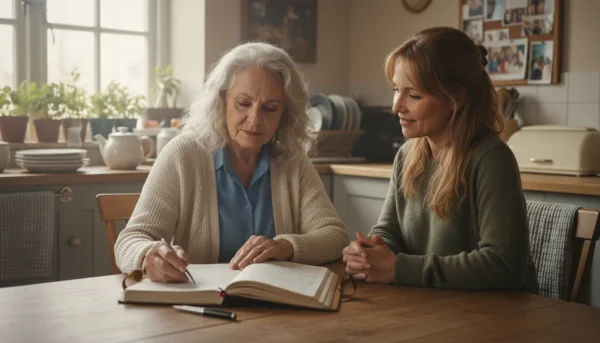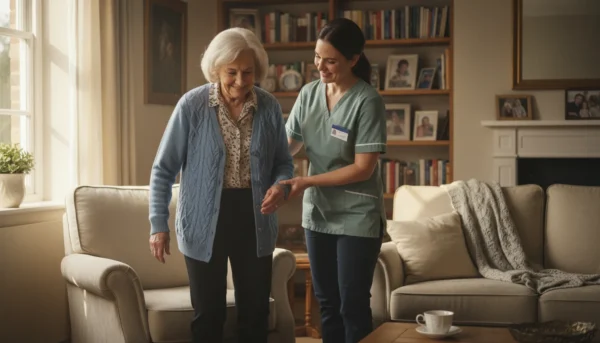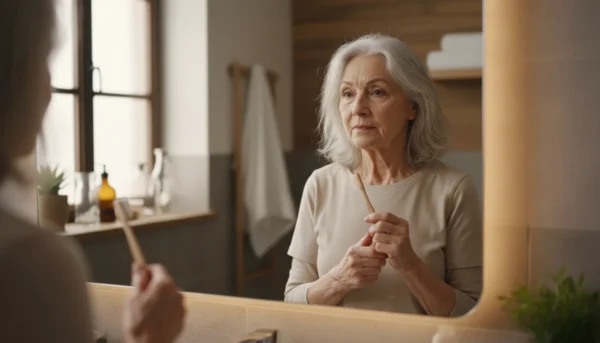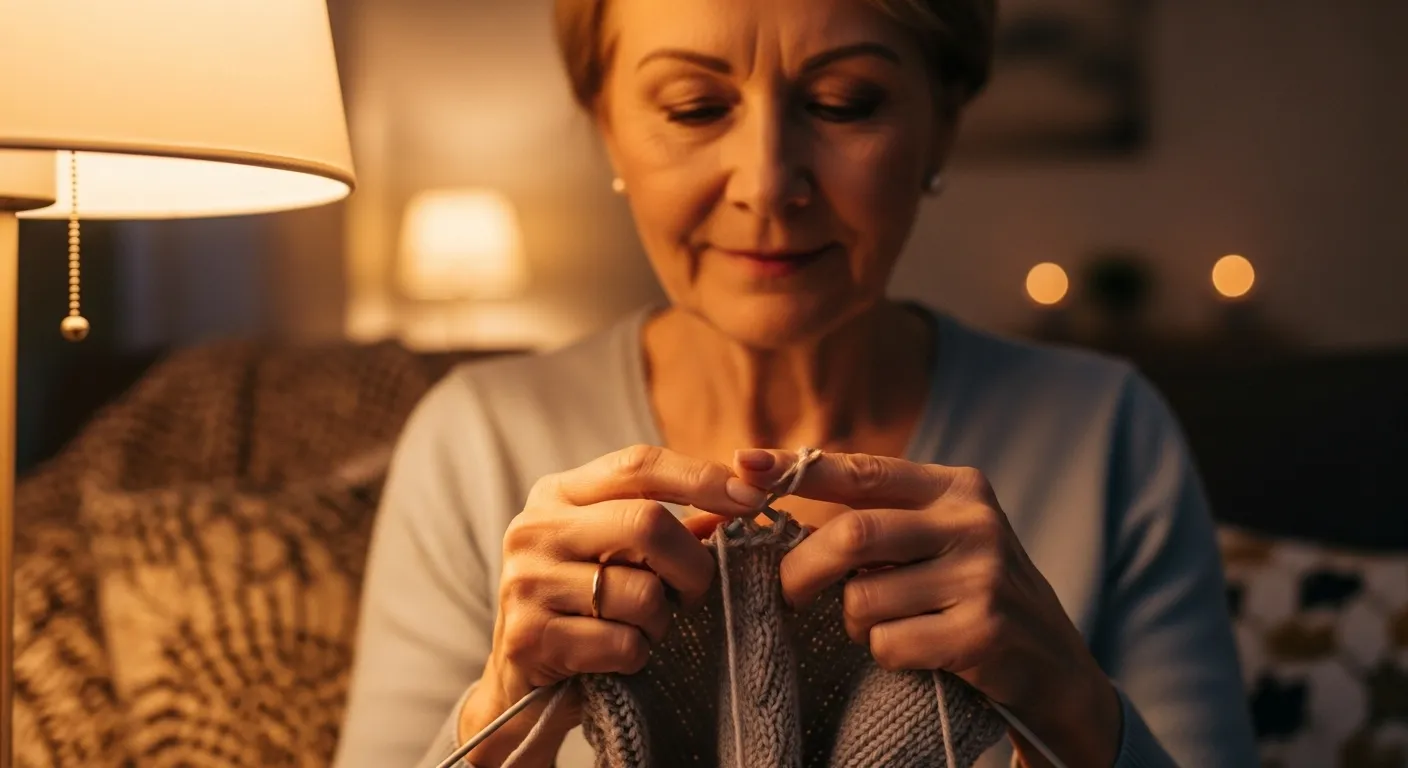
A Step-by-Step Guide to 7 Gentle Exercises Safely
Here are seven low-impact exercises specifically chosen to improve different aspects of your mobility, from joint flexibility to balance and strength. The most important instruction is to perform each movement slowly and with control. Always have a sturdy chair or countertop nearby for support. Wear comfortable, non-slip shoes and clothing that allows you to move freely.
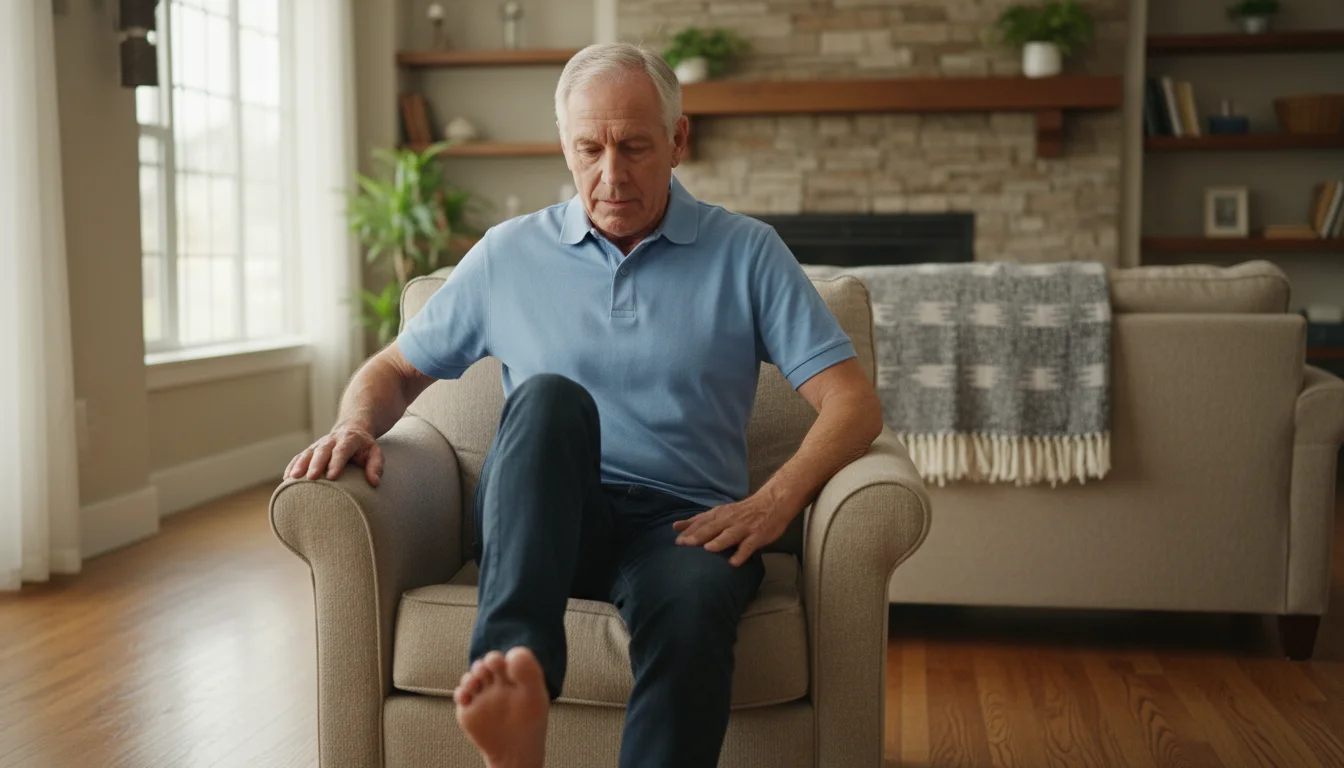
1. Seated Marching
Why it helps: This simple exercise warms up your body and improves hip flexibility and lower body circulation without putting any stress on your knees or hips. It’s a perfect starting point for any mobility routine.
How to do it:
1. Sit upright in a sturdy chair with your feet flat on the floor and your back straight, not leaning against the chair back.
2. Place your hands on your thighs or hold onto the sides of the chair for stability.
3. Slowly lift your right knee toward your chest, as high as is comfortable, as if you are marching in place.
4. Lower your right foot back to the floor with control.
5. Repeat the movement with your left knee.
6. Continue alternating legs in a smooth, marching rhythm.
Safety and Reps: Aim for 20 to 30 total steps (10 to 15 per leg). Breathe steadily throughout the exercise. Keep your core engaged to support your back.
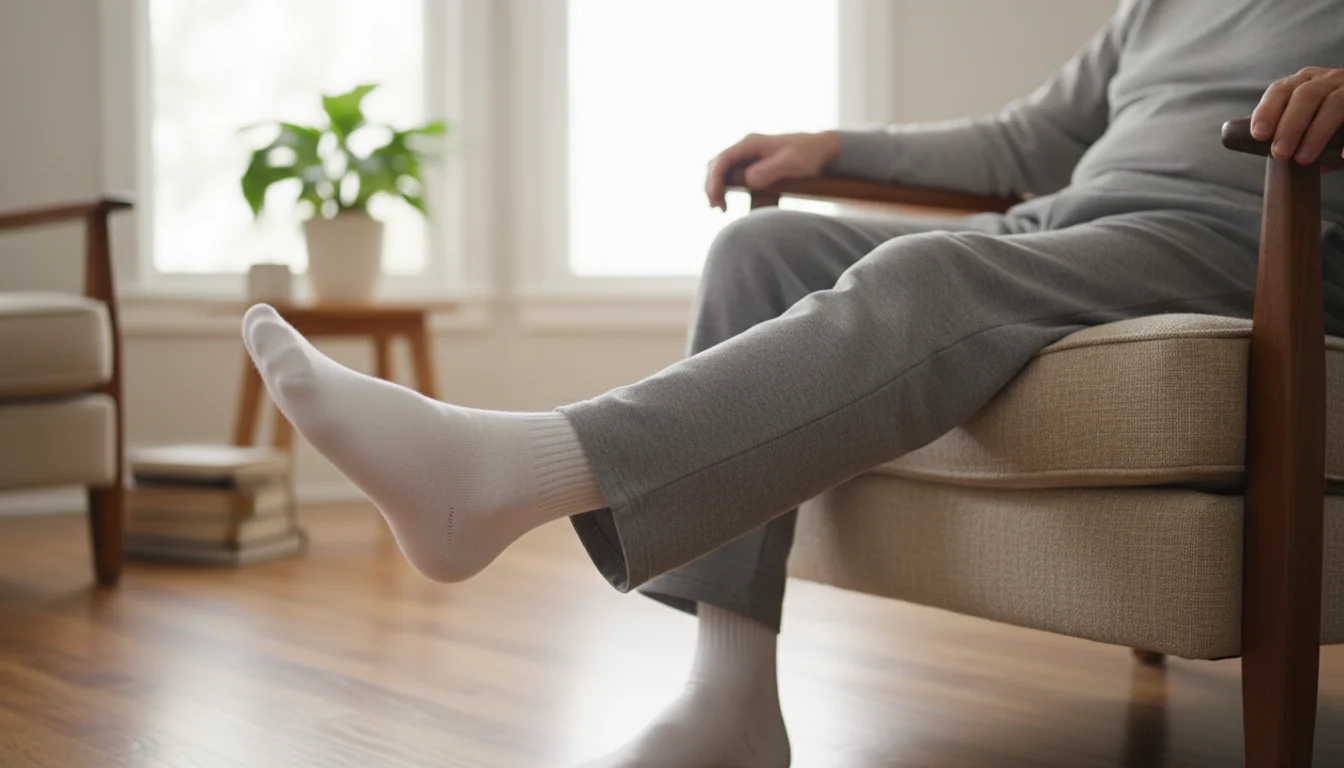
2. Ankle Circles
Why it helps: Ankle flexibility is often overlooked but is crucial for balance and stable walking. This exercise lubricates the ankle joint and can help reduce stiffness, especially in the morning.
How to do it:
1. Sit in a sturdy chair with your back supported.
2. Extend your right leg straight out in front of you, keeping your foot off the floor.
3. Slowly rotate your right ankle in a clockwise circle. Imagine you are drawing a circle with your big toe.
4. After making several circles in one direction, reverse and rotate your ankle counter-clockwise.
5. Lower your right leg and repeat the entire sequence with your left ankle.
Safety and Reps: Perform 10 circles in each direction for each ankle. If extending your leg is difficult, you can perform this exercise by crossing one leg over the other knee and rotating the raised ankle.
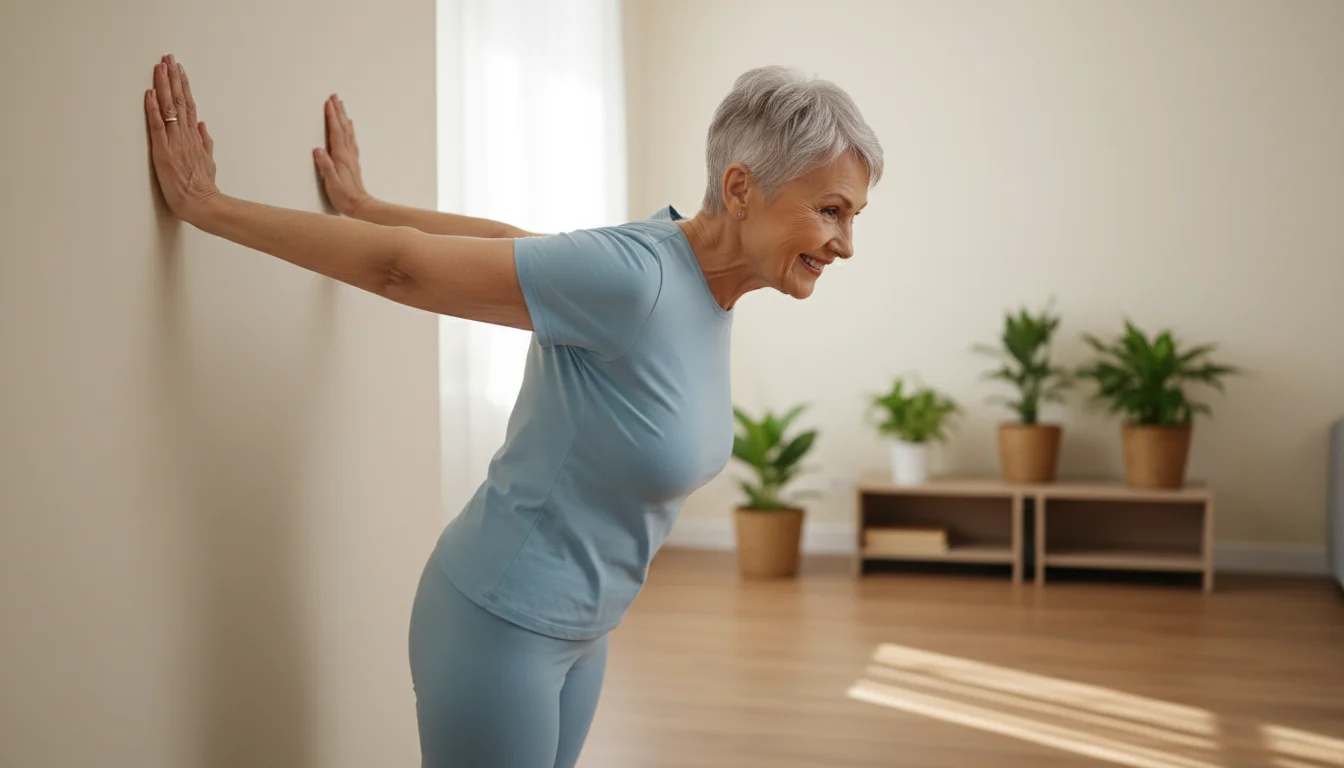
3. Wall Push-up
Why it helps: This exercise builds upper body strength in your chest, shoulders, and arms. This strength is vital for daily tasks like pushing open a heavy door, getting up from a chair, or lifting yourself out of bed.
How to do it:
1. Stand facing a clear, solid wall, about arm’s length away.
2. Place your palms flat on the wall at shoulder height and shoulder-width apart. Your fingers should point toward the ceiling.
3. Keeping your back straight and your feet planted firmly, slowly bend your elbows and lean your body toward the wall.
4. Go as far as you comfortably can, aiming to get your nose close to the wall.
5. Gently push back to the starting position, straightening your arms but not locking your elbows.
Safety and Reps: Start with 5 to 10 repetitions. To make it easier, stand closer to the wall. To make it more challenging, step your feet farther back.
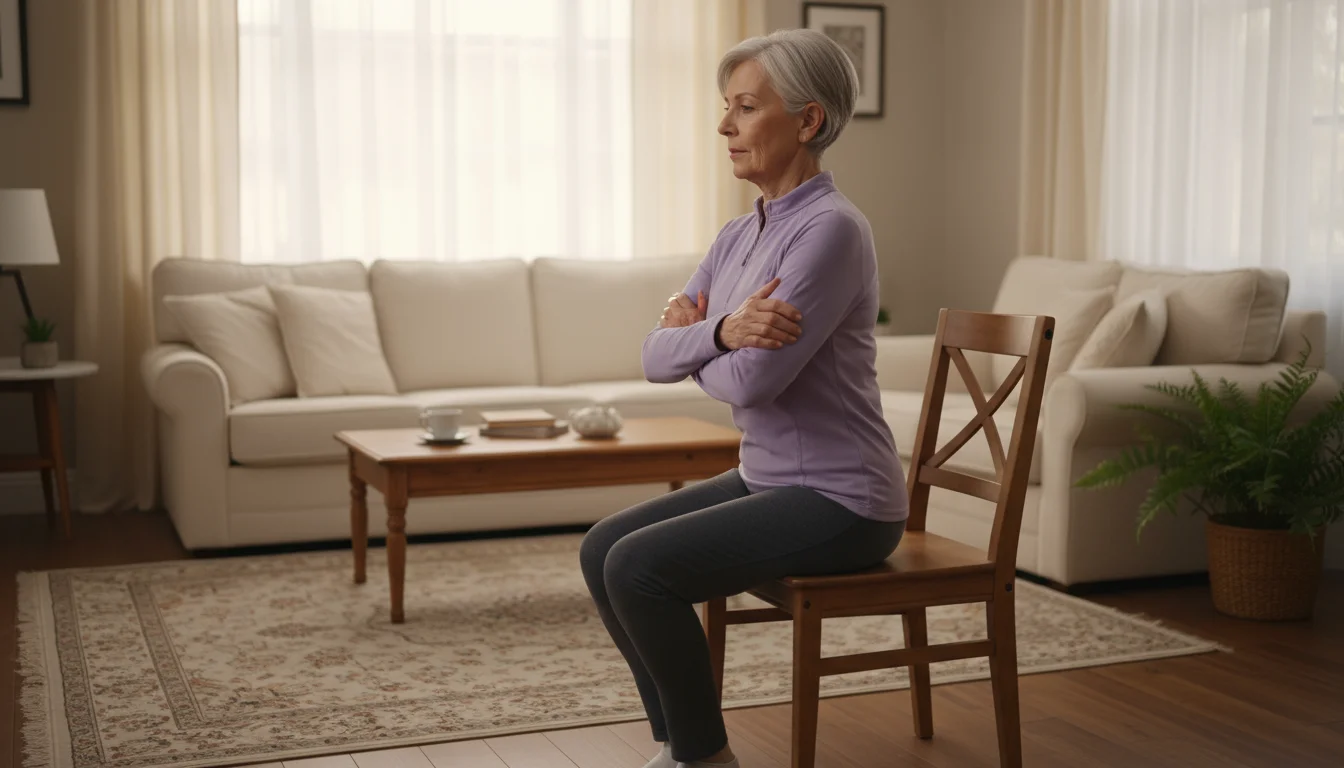
4. Chair Stand
Why it helps: This is one of the most functional exercises for seniors. It strengthens the major muscles in your legs and glutes, directly mimicking the motion of getting up from a seated position, which is a cornerstone of independence.
How to do it:
1. Sit on the front edge of a sturdy, armless chair with your feet flat on the floor, hip-width apart.
2. Cross your arms over your chest or hold them out in front of you for balance.
3. Keeping your back straight and your chest up, lean slightly forward and press through your heels to stand up completely. Use your leg muscles to power the movement.
4. Pause for a moment, then slowly reverse the motion, bending your knees and pushing your hips back to sit down with control. Avoid plopping down into the chair.
Safety and Reps: Aim for 8 to 12 repetitions. If this is too difficult, place your hands on your thighs or the chair’s seat to assist you. Make sure the chair is stable and will not slide.
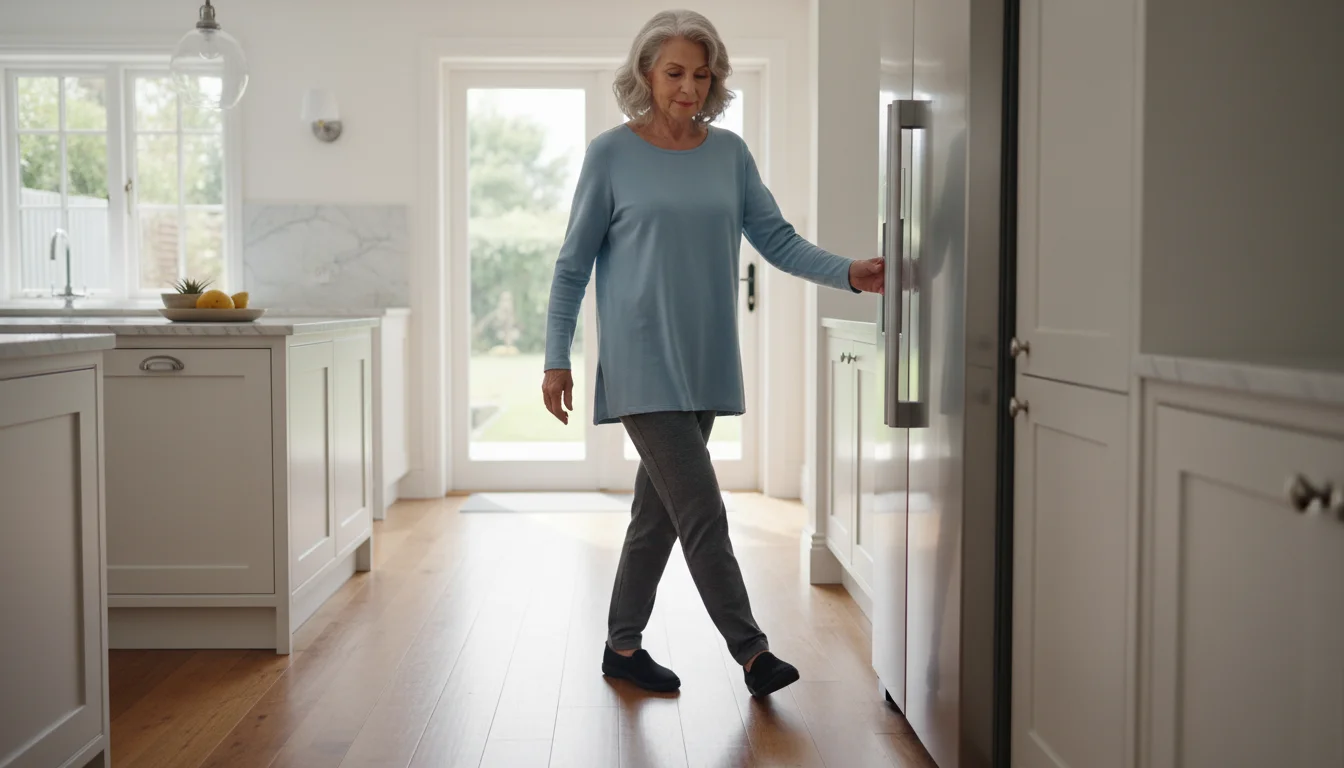
5. Heel-to-Toe Walk
Why it helps: This exercise directly challenges and improves your dynamic balance—the balance you need while walking. It can help you feel more confident and reduce the risk of stumbling.
How to do it:
1. Stand next to a long, stable surface like a kitchen counter or a wall that you can lightly touch for support.
2. Take a step forward with your right foot, placing the heel of your right foot directly in front of the toes of your left foot. Your feet should be in a straight line, as if walking on a tightrope.
3. Pause to find your balance.
4. Now, step forward with your left foot, placing its heel directly in front of the toes of your right foot.
5. Continue this slow, deliberate walk for 10 to 15 steps.
Safety and Reps: Keep your eyes focused on a point in front of you, not down at your feet. Always have a hand near your support surface. Take 10 to 15 steps, then turn around and walk back.
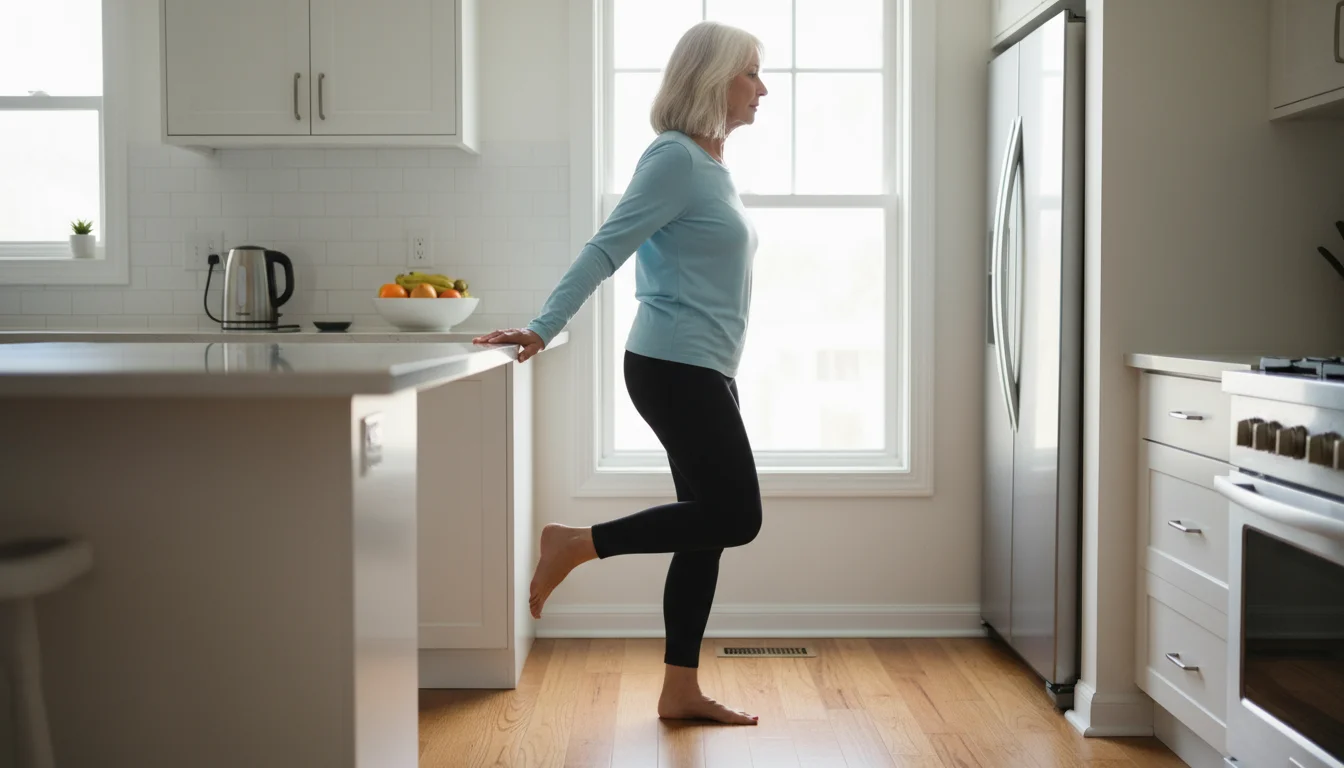
6. Single Leg Stance
Why it helps: This static balance exercise strengthens the muscles in your feet, ankles, and legs, significantly improving your stability and helping to prevent falls.
How to do it:
1. Stand behind a sturdy chair or next to a countertop, holding on with both hands for support.
2. Plant your left foot firmly on the ground.
3. Slowly lift your right foot off the floor, bending your knee.
4. Hold this position, focusing on keeping your body upright and your standing leg stable.
5. Lower your right foot and repeat on the other side, lifting your left foot.
Safety and Reps: Aim to hold the position for 10 seconds on each leg. As you get more confident, try holding on with just one hand, then just one fingertip, and eventually, try to let go completely while keeping your hands hovering over the support.
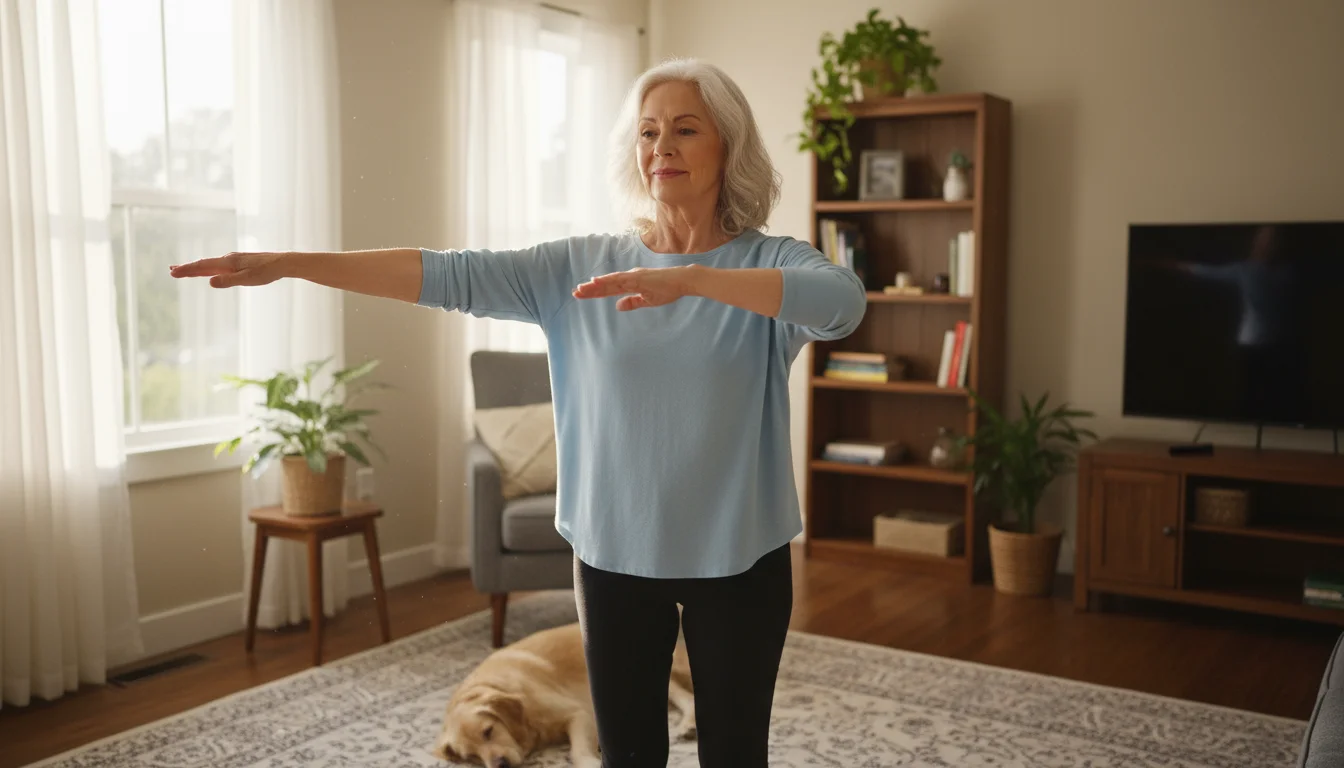
7. Arm Circles
Why it helps: This movement improves the range of motion in your shoulder joints, which is essential for reaching overhead into a cabinet, combing your hair, or putting on a coat.
How to do it:
1. Stand or sit with your back straight and your feet flat on the floor.
2. Extend both arms straight out to your sides at shoulder height, palms facing down.
3. Slowly begin to make small circles with your arms, moving them in a forward direction.
4. After completing the desired number of repetitions, reverse the direction and make circles backward.
5. Keep the movements smooth and controlled.
Safety and Reps: Start with 10 to 15 small circles in each direction. As your mobility improves, you can gradually make the circles larger. If you have shoulder pain, only make circles within a pain-free range.










